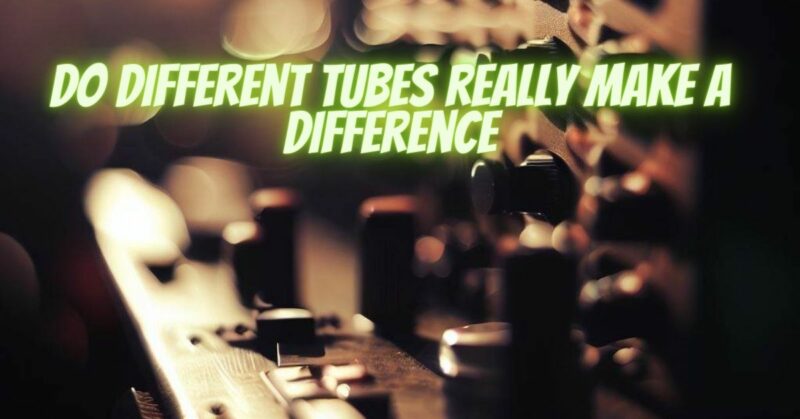In the realm of tube-based audio systems, the choice of tubes can be a subject of fascination and debate among audiophiles and musicians. With a vast array of tube types available, each offering unique characteristics and sonic qualities, the question arises: Do different tubes really make a difference in audio performance? This article aims to explore the impact of tube varieties on sound quality and address the factors that contribute to discernible differences in audio reproduction.
Understanding Tube Varieties
Vacuum tubes, or valves, are electronic components used in various audio devices, such as guitar amplifiers, preamplifiers, and high-fidelity audio systems. Different tube types, such as 12AX7, 6L6, EL34, and many others, are designed with specific electrical properties to perform various tasks in audio circuits. These properties, including gain, plate voltage, and transconductance, contribute to the unique sound characteristics of each tube type.
The Impact of Tube Varieties on Sound
- Gain and Distortion: Tubes with higher gain values, such as 12AX7, can introduce more distortion when pushed to higher amplification levels. In contrast, tubes with lower gain, like 12AU7, exhibit cleaner and more transparent sound.
- Harmonic Content: Different tubes can add varying amounts of even and odd-order harmonics to the audio signal. Even-order harmonics are often perceived as pleasant and contribute to warm and rich tones, while odd-order harmonics can introduce complexity and character.
- Frequency Response: Tube types can have subtle variations in their frequency response, affecting how they emphasize or attenuate specific frequency ranges. This variation influences the tonal balance and timbre of the amplifier.
- Overdrive Characteristics: Tubes respond differently when pushed into overdrive, creating distinct overdriven tones. Some tubes produce smooth and creamy overdrive, while others generate edgier and more aggressive distortion.
Factors Contributing to Differences
- Circuit Design: The overall sound of an audio system is influenced not only by the tube type but also by the entire circuit design. Different amplifiers, preamps, and audio systems will interact with tubes in unique ways, leading to varying sound signatures.
- Component Quality: The quality of other components, such as capacitors, resistors, and transformers, also impacts the overall sound. High-quality components can complement the characteristics of specific tubes, enhancing their sonic performance.
- Biasing: Proper biasing of tubes is crucial for optimal sound quality and tube longevity. Tubes biased differently can exhibit varying tonal characteristics, even within the same tube type.
- Personal Preference: Subjective perception plays a significant role in audio evaluation. Listeners may have different preferences, and what sounds favorable to one person may not appeal to another.
Practical Considerations
While different tubes can indeed make a difference in audio performance, the magnitude of that difference may vary depending on the application and the listener’s sensitivity to sonic nuances. Additionally, budget constraints and availability might influence tube choices. It’s essential to strike a balance between audio quality and practicality.
In conclusion, different tubes do make a difference in audio performance due to their unique electrical properties and sonic characteristics. The choice of tubes can significantly impact the tonal qualities, harmonic content, and distortion characteristics of audio systems. While the differences are real and discernible, they are just one aspect of the entire audio chain. The circuit design, component quality, biasing, and personal preference all contribute to the final audio experience. As such, tube selection should be considered in conjunction with other system components and individual listening preferences to achieve the desired sound signature and maximize the enjoyment of music and audio content.


